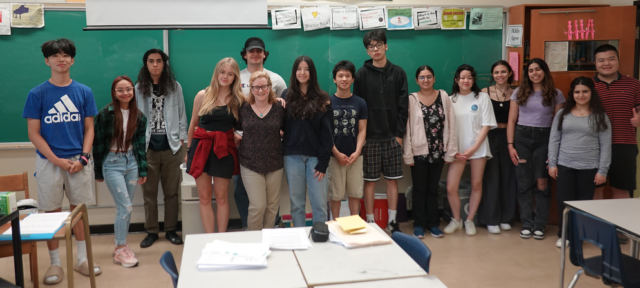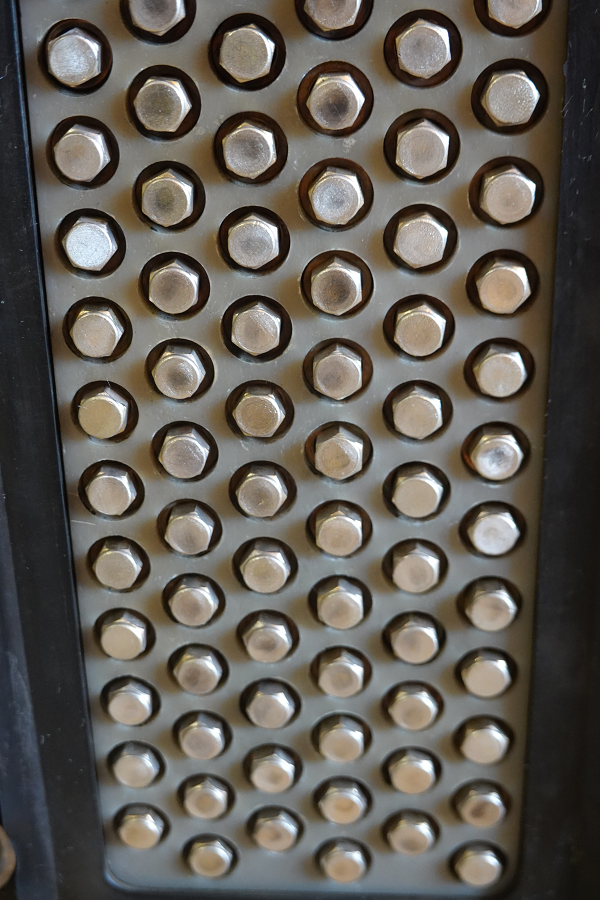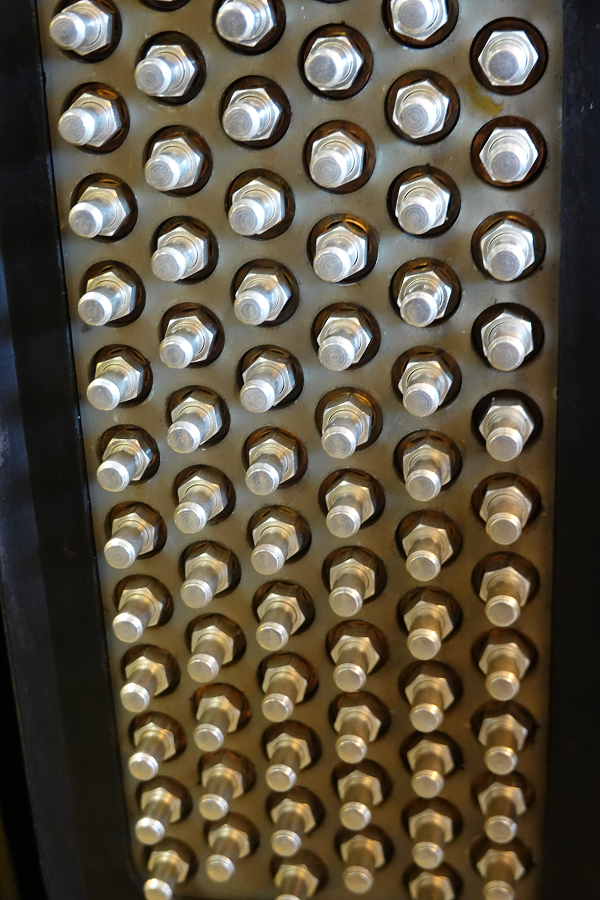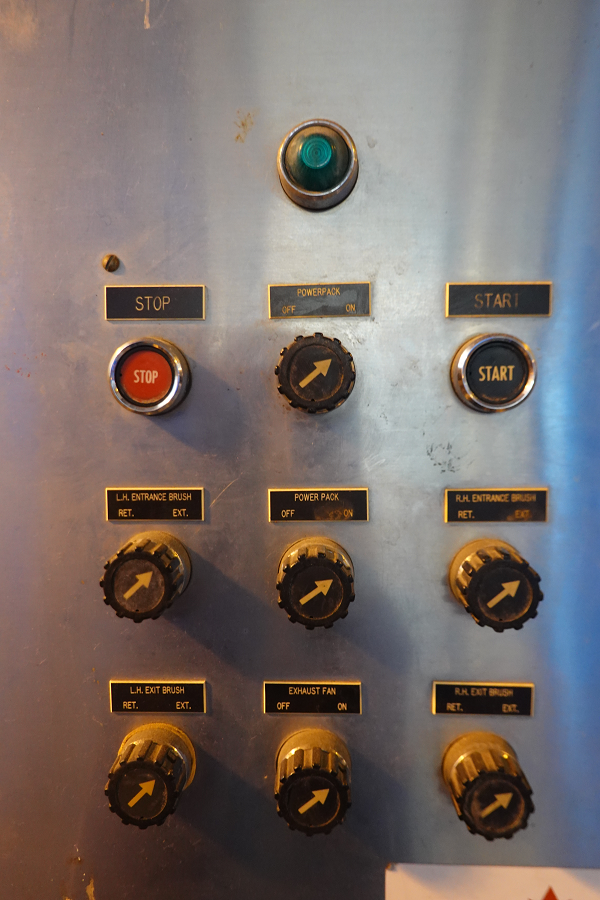Spring Subway Reads
I wanted something a bit lighter and quicker for my spring subway reading so I turned to YA fiction to keep up with possibilities for credit recovery (NOT next year). Earlier in the year I had read the entire Hunger Games series for credit recovery, though it turned out the neither student got past chapter 10. No worries, I enjoyed all three books – far more than the movies (which I also watched simultaneously on Netflix). I also read Ghost Boys by Jewell Parker Rhodes, more of a children’s book, as I was using it for two students in credit recovery on Mr. Bryant’s excellent recommendation. It is an excellent, easy reading book with a powerful story about a 12-year old Black boy shot in Chicago. He tells the story from the perspectives both of being dead and alive. He is taught to be a ghost boy by the ghost of Emmett Till. I wish my students had cared more about the moving nature of the book. Though it only took about two days to read, I cried a bunch of times. They got through it (which is meaningful) without much connection.
The Sun Is Also a Star, by Nicola Yoon; A Very Large Expanse of Sea by Tahereh Mafi
I very much enjoyed the dual perspectives (two characters relate an event in different ways) in The Sun Is Also a Star. The whole time I was reading the book (about 3 days) I was thinking about how I could use these perspectives with students in English credit recovery even if they don’t read the whole book. I heard it was made into a movie as well. However, after watching the trailer I buried what I had seen. The book IS always better.
I had started A Very Large Expanse of Sea about a year ago. I got about a chapter in and decided I didn’t like it because the main character swore too much; this felt too forced. So I put it away. I decided to give it another go. This time I loved it. I guess I had to be in the right headspace to read young adult fiction. The narrator has a very strong voice and is an interesting character, not an easy-going character. I like her sharp tone. I will admit the book brought back a lot of high school memories, some pretty painful in retrospect.


How the Word is Passed by Clint Smith

This is a highly engaging, relevant, hard-hitting book. I had heard about it from the New York Times best seller list last year. So I bought it in February as part of a collection of books to be given as gifts from THHSSSC to people who came to the subject council session at the SWSH PD conference at York Mills. No one wanted it so I kept if for myself but held off taking it home feeling kind of guilty. It was worth the wait.
The subject matter is exactly the hard stuff I love reading about: the history of slavery in the US. But the framework is so clever. Clint Smith travelled to sites – museums, cemeteries, plantations, Angola state prison in Louisiana, to name a few – that have deep connections with slavery; some of them are honest about that history, some of them are not. He went on tours and spoke to fellow tour members and tour leaders. He spoke to experts and researched on his own as well. The result is a meshing of excellent history with beautifully written prose. It is both a timely book given the polarization in the US, and a timeless book given its deep, pensive approach to a very difficult conundrum: how Americans consider (or don’t) slavery in their view of their country’s history.
There were times while reading this book on the subway that I had to stop, put it down, and shake my head. During the author’s tour of the Louisiana State Penitentiary known as Angola, I learned that the US – to this day – has a number of states that do not require unanimous jury verdicts in trials. I was floored but not shocked when I learned the reason was to sideline Black jurors. Similarly, when Smith relayed the average length of sentence in the prison is 87 years I just had to stop reading for a while. All of the chapters are very indicting but the Angola one really shocked me. I don’t know why; it is obvious that mass incarceration is a direct descendant of enslavement.
I’d like to divert to a film review here. About a month before I started reading How the Word Is Passed, I saw a meaningful documentary on Netflix. In retrospect, it pairs very effectively with this book. Descendant shares with the book the perspective that history matters, memories matter. It is the story of a community of people in Alabama who are the direct descendants of the last enslaved people brought to America from Africa over 50 years AFTER the slave trade was made illegal. The premise for the movie is that the there is a new search for the ship, the Clotilda, that was scuttled by the owners in 1860 after it dropped off 110 people in Mobile. The community, Africatown, part of Mobile, Alabama, is coming to grips with what it means, how it should be commemorated, and, for some, how it can bring tourism to the town. It turns out the story isn’t just about the ship and the people who began their forced journey to enslavement on it. The town, very similar to Africville in Nova Scotia, has been a dumping ground for heavy industry for decades as Mobile encroached. There is one moment in the film where a person is walking in a leafy, green section of the town. The camera suddenly pans up to an overhead drone shot and huge smoke stacks are revealed. The town is surrounded by pollution and has high cancer rates (reminds me of Fort McMurray in northern Alberta). One of the last scenes in the film is of a young activist who is taken on a tour of the National Museum of African American History and Culture in Washington, DC led by one of the curators who has been to Africatown to work with the community in the aftermath of the discovery of Clotilda. She is awakened to the power of history. I was ALL in.
Back to the book, I learned a lot even though I consider myself knowledgeable about slavery in the US. Starting with Thomas Jefferson’s plantation in Virginia, Monticello, Smith reports facts about his selling and moving of enslaved people as a means of paying off his personal debts. Some white women on the tour were shocked. Their education on slavery had been limited, part of Smith’s point. Then he goes to Whitney Plantation in Louisiana to learn about a plantation with its enslaved people centered in telling its story. Then to Angola where the prison obfuscates about its history as a plantation and its smooth transition post-slavery to using essentially unpaid the labour of the inmates. Following the prison tour, Smith goes to Galveston to experience and investigate Juneteenth, the celebration/commemoration of Texas’ freeing of the enslaved people. Here he explores the intersection of facts and memory. Next, Smith visits a Civil War cemetery where folks are commemorating the Lost Cause view of the Civil War pretty much completely in opposition to what the war was really about. Interestingly, he also travels to New York City and takes a tour of several areas of the city with Black pasts that aren’t very well known, including to a section of Central Park which was once a Black community. In the penultimate chapter Smith travels to Senegal to look at the telling of the story of slavery from the African perspective and confronts, once again, the complicated relationship between historical fact and historical memory, this time in relation to the infamous House of Slaves which cruelly sent off thousands of enslaved people to their fate in the new world. I found it quite poignant that Smith chose to end his book by exploring the history of his own grandparents by having them share their experiences with racism, Jim Crow, education, and finally, memory.
This book reaffirms for me how much I am grateful to have a career in which I get to instill the importance of history to current day life. Without it, we flail and move backwards.
The 99% Invisible City by Kurt Kholstedt and Roman Mars.

Val bought this book. It’s by the guy who hosts the 99% Invisible podcast, apparently. I haven’t listened to it but I enjoyed the book as its focus is on urban architecture and design (one of Val’s favourite topics, and thus mine, too). It has very short chapters (about 2 pages) that reveal little known facts about cities, ranging from the design of emergency vehicles to the design of lamp posts. Perhaps the podcast is a little bit more in depth. I enjoyed it (note – I am 99% done reading it). But it was too heavy to read on the subway. It’s more for my night table.
What If? 2 by Randall Munroe
This book is also too heavy to read on the subway, but I took it for a few weeks as I needed some lighter fare. The best way to describe this book is: smart, funny, really useless stuff based on science. In other words, Donald Trump wouldn’t read it. Well, I don’t know if he can read. It’s not exactly my thing – I will probably never finish this book. But when I need a ‘smart’ laugh, I will pick it up and learn something that I will never be able to use in real life since I am not planning to create a tower from here to the moon or to know if a plane can be launched by catapult.
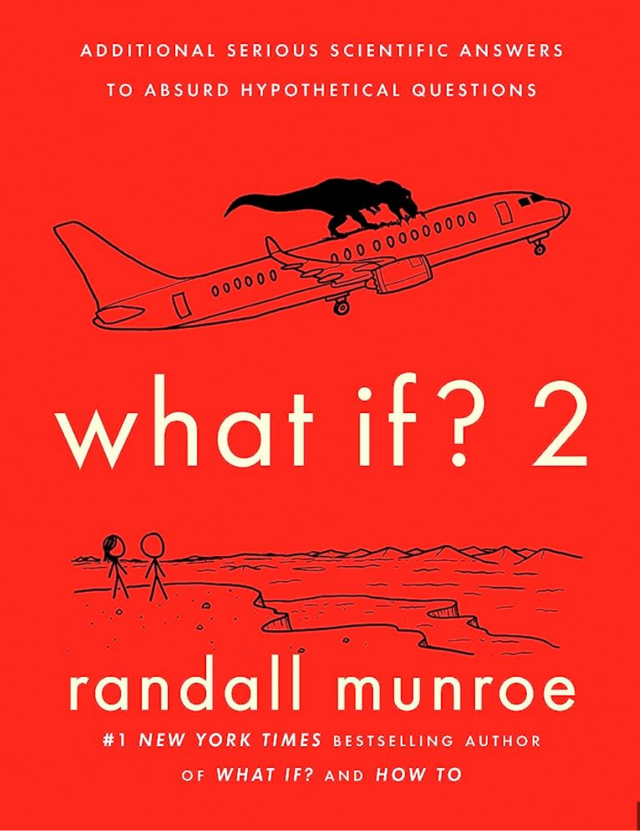
Speaking of Trains
A train weekend: we went to Doors Open Toronto at TTC McCowan Yard. We took the Scarborough RT. It was kind of sad since it’s slated to cease operations in November.
We also finished watching Tripping: Train 185 on TVO. It’s the 480-km journey of the flag stop VIA train from Sudbury to White River, Ontario. It is a beautiful trip through the boreal forest. I don’t want to take it though: I’m not into fishing camps.

Stars on Ice 2023
On May 5 my mom and I returned to Stars on Ice after taking the pandemic off. We had a wonderful time. So I’m sharing some of my photos. Our seats were pretty darn good and I think I did a pretty good job of capturing some nice moments.

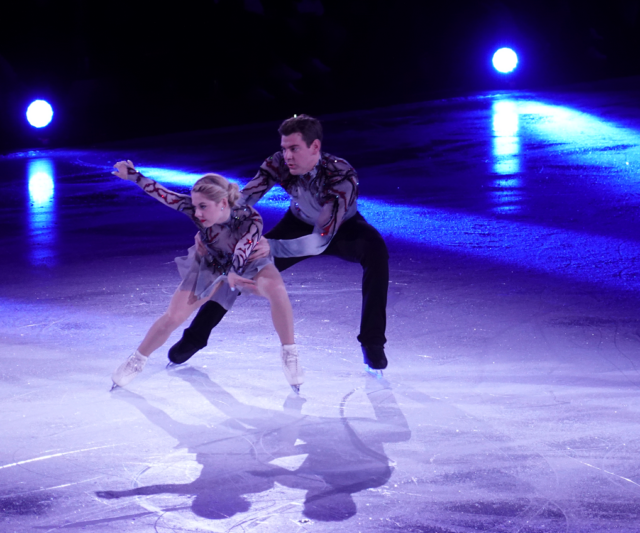
I was really surprised how much I enjoyed watching Alexa Knierem and Brandon Frazier. It wasn’t just that they were the only pairs team. They had a lot of spark and power. I hadn’t seen their free program many times during the skating season; here, I thought it was a fantastic fit for their athletic style.




I have been a fan of Madison Chock and Evan Bates only for about two or three years. I was SO excited to see them in person. And they did not disappoint – so captivating. Moved beautifully.



Jason Brown: what an exciting moment to see Jason live. He is so brilliant, committed to his art. Passionate. But fun-loving and clearly excited to be performing in Toronto where he trained for years. I am so lucky to have finally seen him live. His career has impacted figure-skating and reminded us all that it is not just a sport. It is sport and art. Combined.

Though he doesn’t have the same finesse as Jason, Keegan has the same passion. And speed. Even on the small show ice, he zoomed around. This was also my first time seeing Keegan live – finally.

I’ve seen Patrick skate more times than I can count. He’s not on top of his jumps anymore, clearly. But there is still NO ONE who can glide across the ice like Patrick. He still has that. And that is still well worth watching.

I’ve also seen Piper and Paul live before. I’ve enjoyed their clear happiness at being in Stars on Ice. Same thing this time. In retrospect, I feel lucky to have seen them as Piper revealed a few days ago that she had had ovarian cancer.

Finally to Kurt! Kurt’s 30th Stars on Ice, and I’ve seen almost all of them. Kurt has been my favourite skater for a very long time. No one will ever replace Kurt’s dynamism, comedy, and unique style. What has always impressed me most about Kurt is his chameleon-like ability to do any style. His “duet” with Elvis was fantastic tongue-in-cheek. I don’t think his other pieces were choreographic masterpieces, but they were heart-felt. He did a lot of skating in this event. The James Bond group number was wonderful.

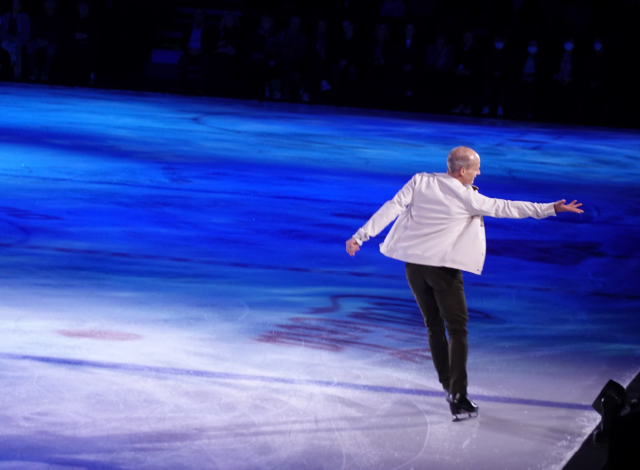
Kurt was clearly very emotional skating for his adopted hometown. His family and friends must have been sitting there along the side on the ice. I loved seeing that truly authentic emotion.
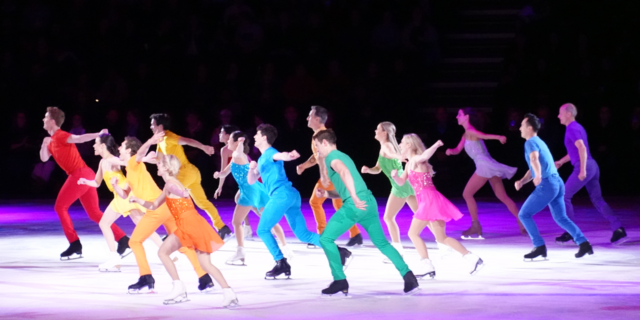

We had an amazing night. We’ll be back next year. Another post to come as there are MORE pics.
Saitama Worlds
I wish I could have gone to the World Figure Skating Championships in Japan. Maybe next year in Montreal.
It has been an interesting year for figure skating fans. Personally, I did not miss the Russians (banned due to the war against Ukraine) at all. After the drama of the last Olympics, I was happy to have that angle eliminated from the entire season. I do not care at all who is doing how many quads at what young age. There is such a thing as longevity and health.
Instead we got perhaps less stellar skating but a much more friendly environment. The Japanese fans are legendary: kind to every single skater, clapping along to the beat at the drop of a hat, and always PRESENT. Particularly at Canadian skating events, the crowds have been sparse this year. To see the Japanese fans go absolutely bonkers for Kaori Sakamoto, Ryuichi Kihara and Riku Miura (pairs), and Daisuke Takahashi and Kana Muramoto (dance) was incredible. I love their passion for the sport. And they love a lot of skaters that I love, too: Piper and Paul, Jason Brown, Keegan Messing, to name a few.
The Worlds did give me some concerns though, particularly with the scoring of the dance event. This leaves me wondering, what do you do when the sport you love is an unsavoury institution? Apparently, even though Russian skaters were banned, Russian coaches were there (sort of understandable) as were Russian ISU officials (how is that possibly allowed???). That is just wrong. How does the international skating union look itself in the mirror?
Yes, ice dance – my favourite – is notoriously the most ‘fixed’ discipline within figure skating. All Canadians probably had extremely high hopes for Piper Gilles and Paul Poirier to bring home the gold. Unfortunately, Piper had an appendectomy and they sat out nationals. To my extreme pleasure, they skated great at Worlds, if maybe a bit slower than usual. The Evita program played really well. They didn’t tinker with it like they did with last year’s Long and Winding Road. Why then were they third in both the short and free dance scoring? I have enjoyed Madison Chock and Evan Bates ever since their Olympic alien routine. I give them huge credit for sticking with this year’s weird theme as well. But they made a huge error (albeit not on an element) in the free dance that should have lowered their overall program component scores to a maximum of 9.5. But apparently that rule was just ignored. As for the Italians who finished with the silver. Good effort. That’s all I’m going to say. Yes, I am a fickle Canadian fan.
I’ve always been a sports fan. These days my sporting tastes are much more limited. I have no regrets that I continue to invest my time and tears into figure skating.

Hamilton
We had an amazing time this week at Hamilton! The play, that is, not the city.
Having studied American history at University of Toronto, I was surprised when Lin-Manuel Miranda turned the story of Alexander Hamilton into an incredibly successful Broadway play. I had watched some scenes on PBS when it initially came out, but I had never seen the whole play. I knew it had hip hop connections. I know almost nothing about hip hop. I knew about Hamilton, generally.
So I went in pretty blind, except for the history part. Back at U of T I took a number of courses about the time period, particularly my favourite ever course from my undergrad years: The History of the American Revolution with professor David Wilson. That course included pretty much the same cast as the musical: George Washington, Thomas Jefferson, James Madison, Alexander Hamilton. Who knew though that Aaron Burr would play such a big role!
/https://www.thestar.com/content/dam/thestar/entertainment/stage/review/2023/02/24/hamilton-is-back-in-toronto-and-it-really-is-that-good/hamilton_and_peggy_national_tour_company.jpg)
Needless to say, we loved it! The music is incredible. The choreography is interestingly engaging. The audience (quite a mix of ages – unusual for a play audience in Toronto) was very into it, especially for King George’s campy scenes (“you’ll be back”) and Thomas Jefferson’s rap battle.
I could sit here and describe the play but that has been done a million times over. I’d rather comment on its approach to history.
The first thing I did after coming home from Hamilton was look up criticism of it. I wanted to know what people think, good or bad. Historically, I thought it was relatively accurate, though not entirely, about Hamilton’s life and work. Whether it’s accurate about Hamilton’s wife, Elizabeth (Eliza) Schuyler, is a pending question. As the second act roles toward its end she becomes the big focus. I have not had a chance to check out the accuracy yet of her portrayal. I’m not into heroism in history. I don’t like this angle on Hamilton.
In a way Hamilton is a story about historiography. The last song is all about ‘who tells your story’, referring to Eliza supposedly continuing Hamilton’s legacy. This focus on historiography is interesting given the play’s context: the American Revolution. The script is all about liberty and yet there is almost total non-inclusion of enslaved Americans as part of the story save for a few tiny references.
Much has been made of Lin-Manuel Miranda’s use of a representational cast . Today, years after its debut, I find it quite ironic to see the almost all Black cast (in the case of the Toronto production) make little mention of the millions of enslaved Americans. I would assume irony was not the original intent. However, circumstances change and audiences make their own interpretations. From that standpoint, I think it’s creative but still has a big hole in it.
It would have been a lot easier to include more reality in the play. Or maybe that was the point: the slavers didn’t give a damn at the time. The scene towards the end where Washington supposedly bows his head in recognition that he didn’t end slavery when American independence took hold is historical revisionism if you ask me.
I will reserve judgement on the overall historical accuracy of Miranda’s script until I read the book upon which he based the play, Ron Chernow’s biography, “Alexander Hamilton.” Then I will judge the book. And only then will I be able to finally judge the play’s use or abuse of history.
Other than that though, it was such a great night out.
History teacher out.
March Break Painting
I don’t claim to be artistic, but I certainly love painting. It’s one of those pandemic hobbies that stuck around. I feel very grateful to have some time off to enjoy it.

Flowers are hard to paint, I find. But they are common subjects. I’m really proud of this one. Of course I don’t design my own. I follow along with the Art Sherpa on YouTube. After I tried this one I tried a version on my own, making my own colour choices. It didn’t turn out to be something I’d want to post. Live and learn.

I love to repurpose old art. This was a piece of black media paper that had a bunch of colours on it just randomly scratched on. I turned it into grumpy owl, also following along with the Art Sherpa on YouTube. Val made fun of me for playing along with the background. It was originally yellow, green, white and blue. I just slapped on some white (as you can see by how uncarefully it was done) to make it less distracting. There was an annoying yellow arrow sticking out of the owl’s head. He didn’t deserve that.

I re-did the background on these hummingbirds numerous times and still don’t love it. The Art Sherpa’s was a lovely blueish grey. Mine was always on the purple side. But eventually I had to stop tinkering. This was also an old canvas that I gessoed and turned into a new one. I try not to notice how unsharp the beaks are and how the eye is in the wrong place for the birdie on the left. Oh well.
New Devilishly Good Book Review

Readers familiar with my book reviews know that I like to email authors after I finish their books. I did it again, but this time I was not emailing a stranger. Mairi Cowan, amazing author and history professor at UTM, is a friend I met through a colleague.
Her new book, The Possession of Barbe Hallay: Diabolical Arts and Daily Life in Early Canada, was an amazing read. It tells the story of a young woman who migrated to Quebec from France in the mid 1600s and experienced some kind of “infestation” by devilish forces. But really it is a book about how to approach a historical mystery or story. I would have read Mairi’s new book no matter what, but I especially love its devilish connection. Ever since I learned about Malleus Maleficarum (The Hammer of Witches, 1486), I have been interested in the topic of women and witchcraft. Luckily, as Mairi points out, by the time of Barbe Hallay, Europeans (or in this case Canadian settlers) religious officials didn’t get quite so worked up and no major panic ensued like in Salem, Massachusetts a few decades later to the south.
I love how didactic this book is. I mean that in the most complimentary way. In fact, I am reading “Barbe” again with a highlighter in hand – yes, on the subway. Out of this I intend to create some new content for my grade 12 world history course; I’ve already adjusted a few things based on things I was reminded of while reading about 17th century Quebec.
I even told my grade 12 history class, on the first day of the semester, that I felt guilty for not including Canada in world history for the last 20+ years of teaching this course. Of course Canada fits in with all the negative themes of colonization, empire, genocide, conversion. It just doesn’t get mentioned very often – my fault.
Since I haven’t taken a university level history course since 2002 (I took Roman history in the summer after my fourth year of teaching), I’ve lost touch with some trends in the discipline. Mairi’s book connected me with microhistory. In her introduction she quotes Edward Muir on the purpose of microhistory: “to elucidate historical causation on the level of small groups where most of real life takes place and to open history to peoples who would be left out by other methods.” Love it, especially Mairi Cowan’s inclusion of the story of watermelon making its way around the world into the hands of a French nun in 17th century Quebec.
She also quotes historian Johan Huizinga: “‘the mainspring of all historical knowledge” is “our perpetual astonishment that the past was once a living reality.'” I suppose that is akin to the saying, “the past is a foreign country.” It’s a good quote to help students understand the importance of context. And perhaps it also helps explain why I like history. I can never answer that big “why” question when students ask. You’d think I’d have one by now, 25 years into my history teaching career.
This book has prompted me to add some Quebec-based figures into my unit one culminating activity, the Global Gathering. It also got me thinking about ways to add more Indigenous content into my course. I’ve done so with some topics in unit two related to the history of the Hudson’s Bay Company, the Royal Proclamation, and some Indigenous figures I never learned about during my education.
Learning is growing.
Take a listen to Mairi Cowan on CBC’s Ideas.
Next up, Val and I are reading David Javerbaum’s The Book of Pslams. NO, that is not a spelling error. Yes, we are reading it together because it is so hysterical. I’ll be sure to give it a puritanically glowing review.






